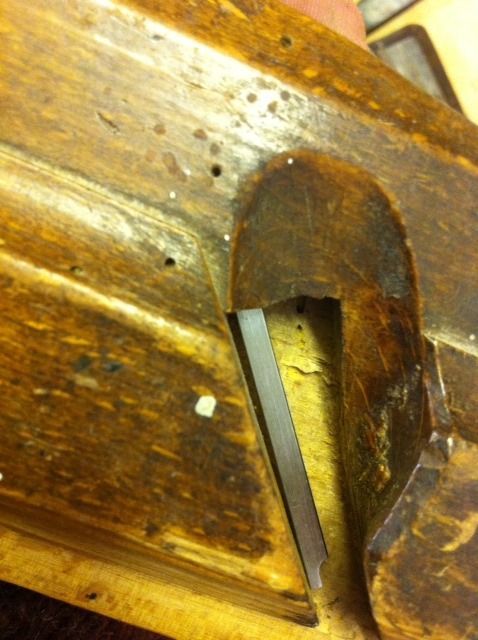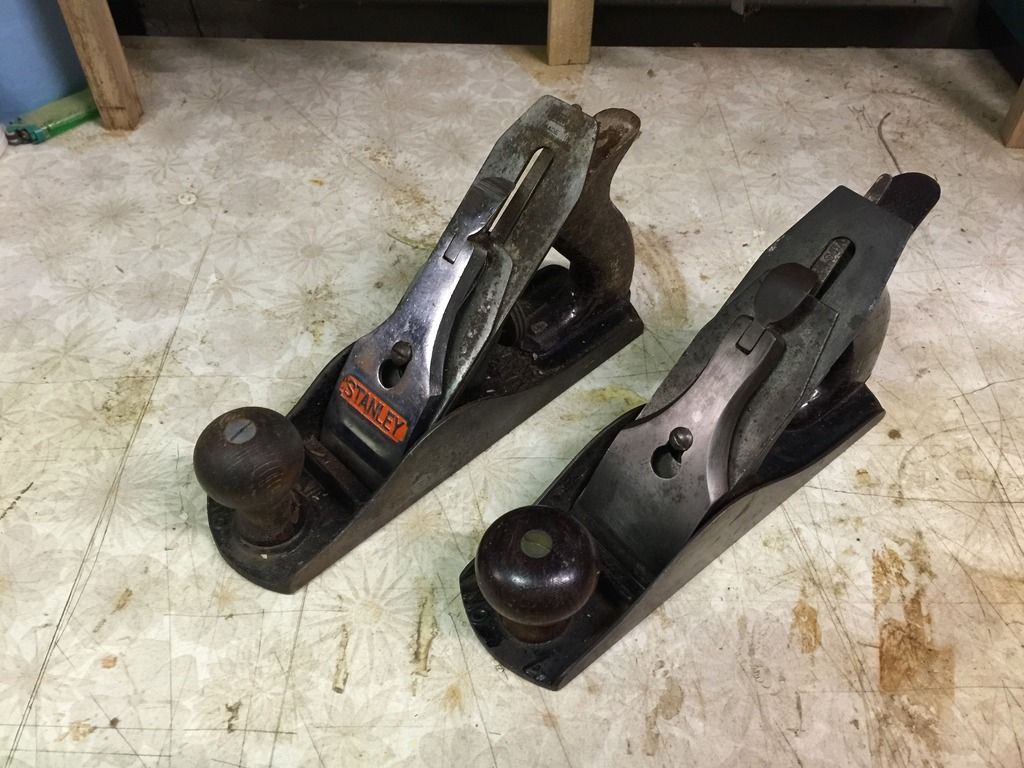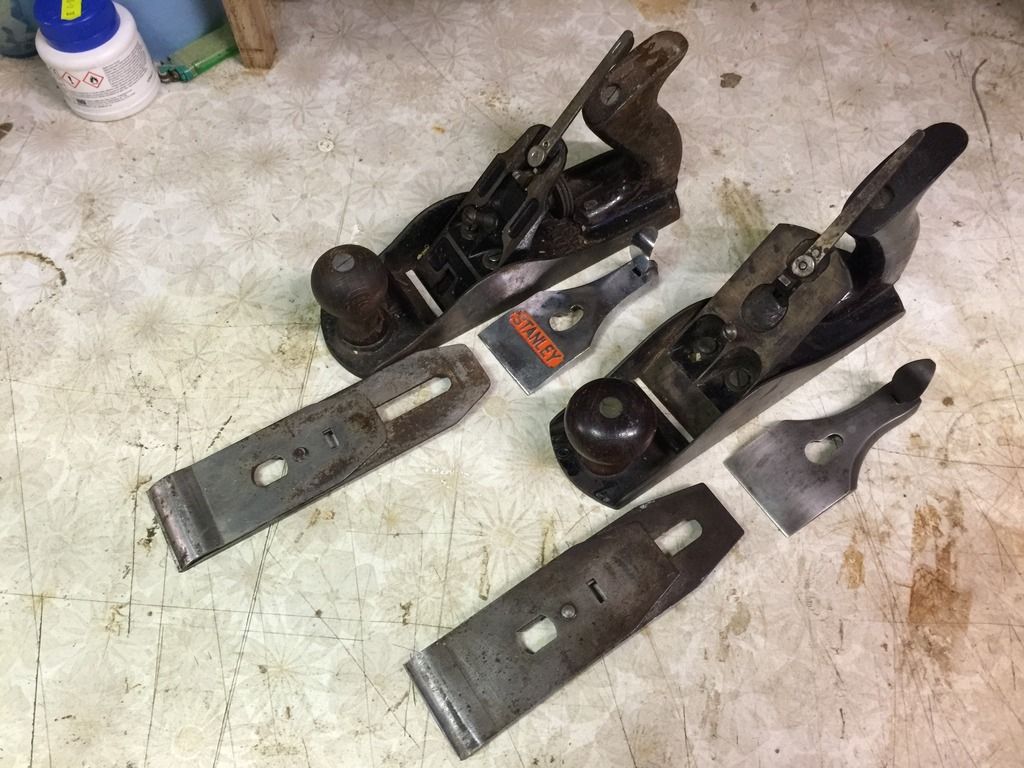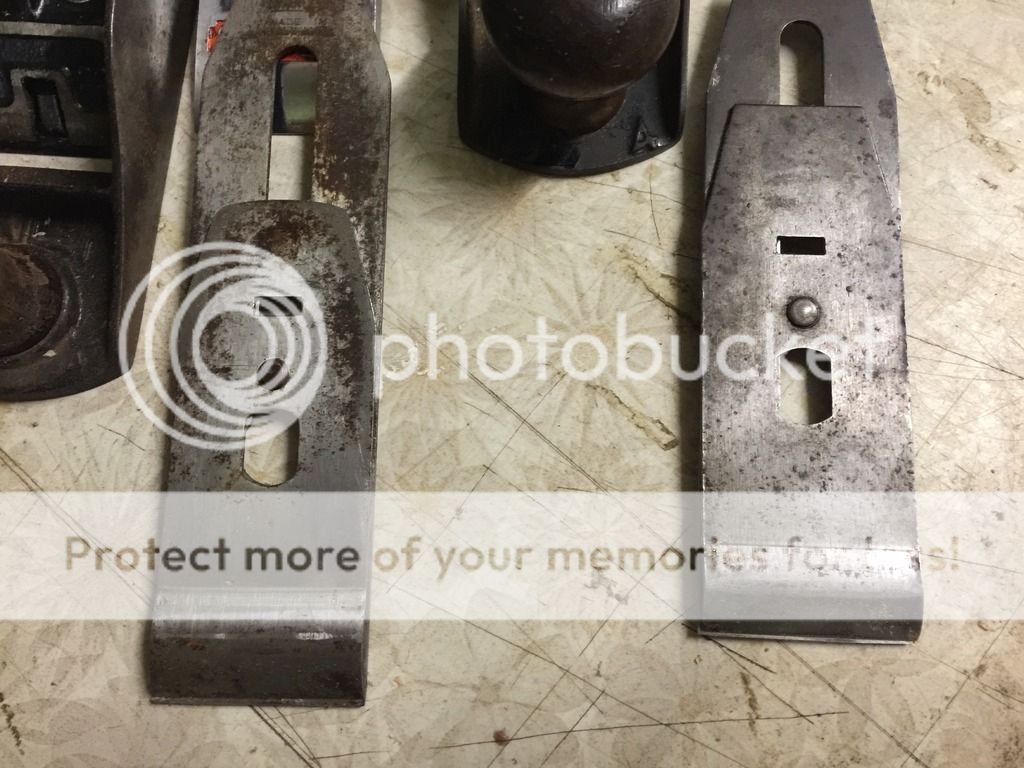That issue is exactly what I was addressing when I made the statement that if your blade life is too short, the shaving is probably too thin.
I certainly can't deny that the harder alloy steel blades will hold a thin-shaving type edge longer (that is, if all you're doing is taking a thousandth or possibly two and not using the cap iron properly, a harder iron or one with a bunch of non-iron carbides in it will do that for longer).
But when you turn the shaving up a notch to double that, the gap narrows.
Years ago, I was making several infill planes and at the time I got frustrated with the inability of the lie nielsen A2 irons' ability to stay keen in cocobolo that had a bunch of silica in it (silica that you could see - sparkling). I thought I'd hit the jackpot when I bought a couple of continental style mujingfang planes with high speed steel irons in them, they stood up to that much better than lie nielsen's A2 irons (which are about as good as A2 irons get - though there's not really that much variation from maker to maker, lie nielsen's are still the best I've used).
A year and a half ago, I made two more planes out of cocobolo and resolved to set the cap iron for most of the work, sharpen only with a washita, and use only a stanley 4 with a stock iron. I also made a conscious effort to take a thicker shaving. Aside from bandsawing the blank after squaring, everything was done with a stanley 4. Each plane required no resharpening. I reserved thin shavings only for a few passes to remove any tearout, the rest were probably double or triple finish shaving thickness.
I would pose this as a question if 62 hardness irons are such a great thing - why didn't anyone care to have them on earlier planes? It's not as if the steel in stanley, or sargent or anyone else's planes couldn't handle that hardness. It certainly could, but the users were more educated in using planes for more than 2 thousandth shavings.
I still have some "premium" irons left in my shop, but the context of actually getting something done is:
* use a stock iron, sharpen it with a washita and a bare strop, sharpen in a minute and spend another minute taking the plane apart and putting it together and get back to work
* take a thicker shaving with the cap set if you are doing something more than taking a final shaving
I have one other instance of this to compare, I'd be ecstatic if someone would test it, that the advantage of a harder iron disappears when the shaving is increased in thickness some. I have a single premium bench plane - a lee valley plane with a V11 iron. I set out to get an idea of it in sizing a try plane blank of beech, something that I have done plenty of with an old butcher laminated iron that someone sold to me unused. I expected to see the V11 iron outlast a try plane iron like that (water hardening steel, probably something in the neighborhood of 58 hardness) by a factor of two or three. I got less far with the V11 iron than I did the try plane. Part of that is because the try plane is a much better plane for coarse work than a 15 inch metal plane, but I was shocked.
If I took both of those planes and compared them in a contest of which could plane the most feet of 1 thousandth shavings, I'm sure that the V11 iron would win easily. Backed out to real world use, and it's not as clear.
And the butcher iron can be sharpened on a single washita stone and it responds well to a bare leather strop. This method of sharpening can't be appreciated by someone until they have worked a fair amount in context and gotten out of the idea of paint by numbers woodworking and sharpening.
But, I get it if someone struggles to sharpen and has to get out a bunch of gadgetry, and wants to prolong the interval between as long as possible. History shows preference otherwise, though, and for good reason. The "hard iron" fascination came along as a crutch to amatuers.
If you'd like to get an idea (I know you don't care) why people like me and some others who get further into planing prefer carbon steel knocked down a click in hardness, all you have to do is look at brent beach's pictures of edges after he's planed with them. The alloy steel irons look like garbage. The slightly softer and finer carbon steel irons will plane until their clearance runs out without leaving any marks on anything.
But they won't pass the amateur's pointless test of the most 1 thousandth shavings in a row. It takes a little bit of skill and practicality in planing to get past such nonsense.
Eskilstuna carbon (look at the edge):
http://www3.telus.net/BrentBeach/Sharpen/EKtest.html
Lie Nielsen A2:
http://www3.telus.net/BrentBeach/Sharpen/LNA2test.html
D2:
http://www3.telus.net/BrentBeach/Sharpe ... %20D2.html
(You can see the edges of the latter two, and they leave evidence on a finish planed surface. Brent didn't print the results of turn of the century american stanley irons, but they're just slighty softer than eskilstuna irons and fail in the same way - uniform fine wear).









